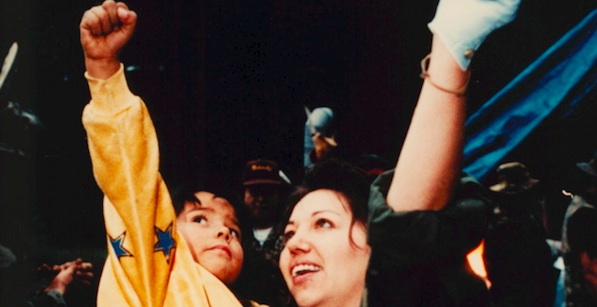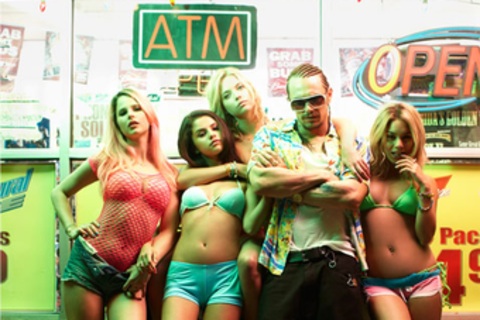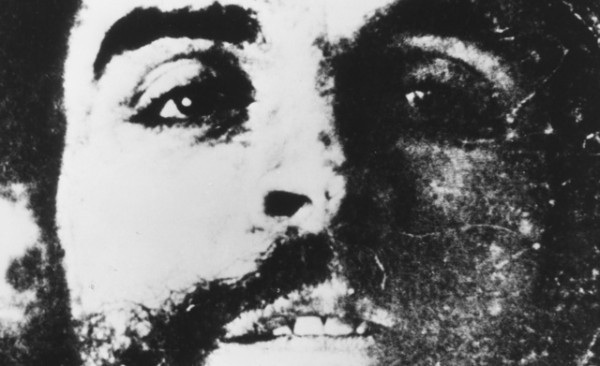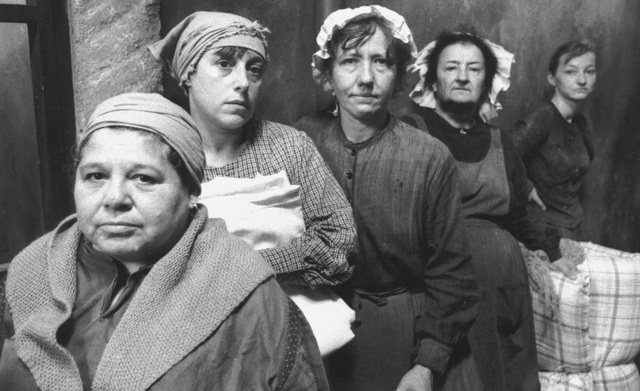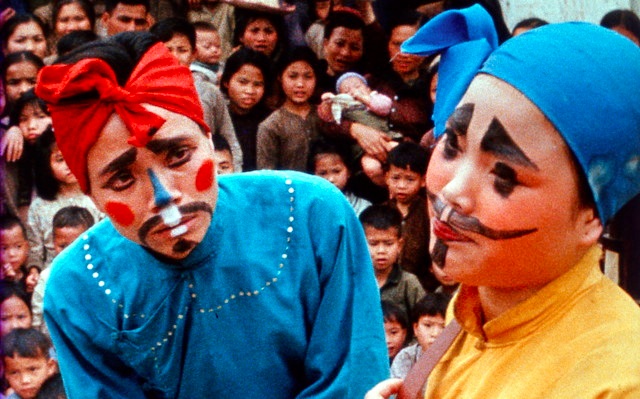Every ruling class invents images of itself for the entertainment and edification of the subordinate classes….Every subordinate class constructs an image of itself, and of the ruling class, which does not entirely conform to this invention from above.
—Allan Sekula (1951-2013)
When I see what passes today as “radical” filmmaking, I can only shake my head. On the one hand, we have “edgy” mainstream American films like Django Unchained and Spring Breakers that repackage radical impulses as mallplex-friendly consumer goods. At the same time, contemporary festival and art house fare deliver glossy, sentimentalized museum pieces of the radical past, such as Olivier Assayas’ post-’68 nostalgia trip Something in the Air, released earlier this year and already contending for critics’ top ten lists. While most media and critical coverage is trained to these sexed-up, glossy distortions of “radical” cinema, a more significant alternative does exist. It has existed for decades, if only in the shadows of the mainstream.
[iframe width=”560″ height=”360″ src=”//www.youtube.com/embed/7bvzzdAzXJs” frameborder=”0″ allowfullscreen]
This neglected tradition is finally getting its due in an important film series, The Cinema of Resistance, screening for one week starting Friday at the Film Society of Lincoln Center. For those not in New York City, links to watch the titles in the program that are available online are provided throughout this article. The issue of accessing these films is crucial, especially when one stares down the narrow set of readily available options that even smart people consider “radical” filmmaking.
This narrowness is evident in the rave reviews of Harmony Korine’s Spring Breakers, the film that is easily this year’s front-runner for inspiring the most inane critical analysis. One recent think-piece lays out the subversive case for the film: “Spring Breakers is intent on punishing audiences for their pleasure, in making them pay a psychological cost for wanting to see sexy, desperate young women in dangerous scenarios.” The writer then goes on to exalt the thoroughly entertaining qualities of the film, as if he had just forgotten what he had written, or had thoroughly internalized the film’s agenda of having it both ways. Some call this a sign of the film’s ambiguity; I call it a sign of the film’s hypocrisy, typical of a kind of movie whose provocative or subversive content, whatever it may be, is subordinate to its need to sell itself.
Perhaps the critical salivating over Spring Breakers is a matter of relative value: when critics have to duck through a stampede of vacuous Hollywood product every week, I can see how they might cling to Spring Breakers as something seemingly radical and edgy. But isn’t this the same as celebrating the lettuce on a Big Mac for its nutritional content? These kinds of distorted perspectives and meek expectations are a by-product of limited exposure to what else is possible, and what more actually exists beyond the dominion of commercial mass culture.
Still, this distortion is so rampant that it manifests itself without so much as a passing notice, and even gets celebrated. I realized this recently when visiting Audiovisualcy, a Vimeo channel that remains the most reliable curated resource for discovering critical video essays found on the web. The site spotlighted a video titled “Sticking It to the Man,” which claims to present “instances of cinematic civil disobedience and revolt” in movies. For those who don’t know what “The Man” refers to, the video graciously displays a dictionary definition, followed by an ungraciously silly clip from School of Rock with Jack Black ranting about “The Man” to a room of incredulous schoolchildren. It’s just one in a series of clips taken out of context, blended in an incoherent montage where everything from Fight Club to V for Vendetta to Rambo fly by in an anti-establishment movie mishmash. The net effect of this pop culture supercut only underscores the extent to which the idea of radicalism has been trivialized, reduced to the movie equivalent of a T-shirt slogan.
I commented on the video’s Vimeo page with a link to the Lincoln Center program as a way of suggesting “further consideration” on the topic. I was dismayed when the video’s maker replied rather backhandedly, “Thanks for the esoteric suggestions,” but I was more startled to learn that the maker is Omer Ahmed, a prolific video essayist whose work on Bresson and Indian cinema I’ve greatly admired, and who serves as the head of a film studies department in a British college. Perhaps this goes to show how films that really do “stick it to The Man” get pushed far away from the view of most people, even reputable film scholars and discerning film critics. This may be because these films propose something far more dangerous and radical than Django Unchained or Spring Breakers—that movies aren’t a spectator sport for us to get our rebellious rocks off via proxy, but a call to action: not just take the injustices of the world seriously, and to be motivated to actually do something about it.
“Real alternatives from those offered by the System are only possible if one of two requirements is fulfilled:
Make films that the System cannot assimilate,
or make films that directly and explicitly set out to fight the System.”
This assertion of what really defines “radical cinema” can be found in the 1969 manifesto “Towards a Third Cinema” by Fernando Solanas and Octavio Getino. In their native Argentina, Solanas and Getino practiced what they preached, creating a revolutionary, politically-conscious alternative to mainstream and art house movies, one that spoke out courageously against the repressive order of the ruling military junta. Nowhere is their vision more blisteringly clear than in their four-hour magnum opus Hour of the Furnaces (1968), which ranks as possibly the greatest Latin American film ever made, and almost certainly the most ambitious.
Exhaustively detailing the social injustices bred by 400 years of Argentine colonial history, Hour of the Furnaces blends observational documentary, interviews, essay montage and polemic into a giant rallying cry for change. Banned from theaters, the film screened in underground salons and political meetings as a vehicle for political discourse; at points the film even addresses the audience to stop the film and discuss what they just watched. In other words, a new system of filmmaking and exhibition sprung from a radical new understanding of what a film is supposed to accomplish.
Hour of the Furnaces is a lasting landmark in radical filmmaking, as fresh today as it was forty-five years ago. But it wasn’t the first of its kind. Looking at the Lincoln Center lineup, one finds a hall of fame of progressive filmmakers who took great risks to film acts of resistance, not always by choice, but by a call of conscience. If they aren’t household names like Michael Moore or Morgan Spurlock, it may be because they were less interested in appealing to the entertainment industry than in sparking real change. Among the names in the series:
Rene Vautier: In 1949, when he was twenty-one years old, the French director was assigned by his government to make an educational film about life in West Africa. But when he got there, he was horrified by what he saw: a systemic and often violent oppression of the natives that was never reported in the French press. Defying orders, Vautier’s film Afrique 50 (1950), was the first anti-colonialist French film, an open call to support African independence. The film was banned for over forty years and Vautier spent a year in prison for breaking censorship laws.
Joris Ivens: At age sixty-nine, Ivens and his wife Marceline Loridan traveled to the world’s worst war zone: the border of North and South Vietnam. Spending two months under intense bombing, their mission was to capture the reality of the Vietnamese people that much of the Western world at that time hadn’t seen. Their film The 17th Parallel (1968) is easily among the most vivid shot throughout the Vietnam War. In stark contrast to the racist depictions of Vietnamese in films like The Deer Hunter and Apocalypse Now, it lets Vietnamese share first-hand experiences of life under fire.
Emile de Antonio: The longtime leftist filmmaker gained special permission to interview members of the radical activist collective The Weather Underground, then in hiding from the FBI. To make Underground (1976) De Antonio and cameraman Haskell Wexler had to devise a way to film so as not to disclose information that could lead to the group’s capture. The FBI subpoenaed the filmmakers to confiscate the footage, but the First Amendment prevailed in court.
Arthur MacCaig: The American filmmaker evaded British police for three years while filming in Northern Ireland in order to capture some of the most graphic footage of the Irish civil rights movement in the 1970s. His film The Patriot Game (1979) is considered one of the most crucial accounts of the Irish nationalist struggle, breaking from the standard depiction of the IRA as religious terrorists and recasting the conflict as one against imperialist class oppression.
Alanis Obomsawin: When local authorities in Quebec tried to turn Native Mohawk tribal land into a golf course, the Mohawk people staged a revolt, taking up arms to reclaim their land. Obomsawin, an indigenous Canadian filmmaker, lived with the Mohawks for two months while filming their violent showdown with the Canadian army. The resulting film, Kanehsatake: 270 Years of Resistance (1993), was initially rejected by Canadian television for taking the side of the Mohawks, but eventually was aired to great acclaim.
These directors all made sacrifices to show the resistance of underprivileged people in all corners of the world, and to urge others to unite against institutional oppression, while mainstream media largely looked the other way. But radical filmmaking doesn’t always mean that one has to go where the action is, especially when one realizes that the media itself is a battleground where reality can be wielded or re-cast to suit various agendas. Among the first and foremost artists to realize this was Cuban filmmaker Santiago Alvarez, who, as one of the original remix artists and media hijackers, was decades ahead of his time. He once famously stated that to make a movie, all he needed was two images, an editing deck and a music track. His ferocious editing skills and groundbreaking mastery of found footage can be seen in LBJ (1968), 79 Springtimes (1969) and in key passages of Hour of the Furnaces (1968).
Filmmakers developed other innovative approaches to tackle the complexities of political themes. Peter Watkins pioneered the docu-drama format as a powerful unmasking device, exposing how reality is constructed by mass media. His last film, La Commune: Paris, 1871, boldly re-imagines the Paris Commune, a failed attempt to create an egalitarian society, as a media event fought between a state-controlled network and a grassroots news team. Watching it today one can’t help but see its resonance with the Occupy movement, the Arab revolts and the current crises in Egypt and Syria.
Robert Kramer’s forgotten masterpiece Ice (1970) explores a sprawling network of radical activists at risk of unraveling amidst outside pressures and competing agendas. Its ensemble creates an atmospheric buzz comparable to the best Robert Altman films, and its restless energy is certainly more exciting than the amber-cast nostalgia of Something in the Air.
Sometimes it’s the political event itself that takes on artistic dimensions. Italian experimental filmmaker Alberto Grifi’s Parco Lambro Juvenile Proletariat Festival (1976) witnesses a hippie music event transform into a mass revolt. Attendees protest exorbitant prices at the concession stands, reflecting the event’s commodification of the counter-culture for profit. Grifi just has to hit record on his videocamera to capture a gloriously spontaneous expression of dissent: people storming food trucks, “liberating chickens,” and eventually dancing nude in giant celebratory circles of anti-materialist communion. This rejection of the selling out of revolutionary impulses is something sorely missing today whenever audiences unblinkingly accept whatever is marketed to them as “radical” or “transgressive,” Quentin Tarantino included.
Indeed, where can one find a true radical spirit in today’s filmmaking? It’s a question worth asking the curators of the Lincoln Center program, given that the vast majority of their selections are from the 1960s and 1970s. The only recent works are a sampling of shorts related to Occupy Wall Street, and Far from Afghanistan (2012), a collaboration among activist filmmakers (including series co-curator John Gianvito) addressing the ongoing U.S. military presence in Afghanistan. The film very consciously carries the torch of cinematic dissent, its title paying homage to the 1967 film Far from Vietnam, itself a groundbreaking group effort involving such legendary directors as Jean-Luc Godard, Chris Marker and Alain Resnais.
Similar to their precursor, Far from Afghanistan combines vivid ground-level footage of daily life in a war zone with more meditative reflections on the war’s relevance to American politics, economy and people. It amounts to one of the most important American films of the year, if only because Afghanistan is now the longest-running official war in U.S. history, and yet receives only two percent of total U.S. news coverage. In taking up a cause that’s been shunted to the sidelines of our minds, the film revitalizes the long legacy of radical resistance filmmaking. As the films in this program attest, it’s a heritage that, in perpetual opposition to the systems of power, has never received its due or fully realized its potential. But as long as injustice exists and there are people committed to oppose it, there will always be fuel for its fire.
Kevin B. Lee is a filmmaker, critic, video essayist, and founding editor of Keyframe. He tweets as @alsolikelife.

